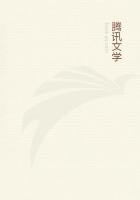We will suppose that the ******* keeps his ordinary working books, modern tomes, and all that serve him as literary tools, on open shelves. These may reach the roof, if he has books to fill them, and it is only necessary to see that the back of the bookcases are slightly removed from contact with the walls. The more precious and beautifully bound treasures will naturally be stored in a case with closely-fitting glass-doors. {2} The shelves should be lined with velvet or chamois leather, that the delicate edges of the books may not suffer from contact with the wood. A leather lining, fitted to the back of the case, will also help to keep out humidity. Most writers recommend that the bookcases should be made of wood close in the grain, such as well-seasoned oak; or, for smaller tabernacles of literature, of mahogany, satin-wood lined with cedar, ebony, and so forth. These close-grained woods are less easily penetrated by insects, and it is fancied that book-worms dislike the aromatic scents of cedar, sandal wood, and Russia leather. There was once a bibliophile who said that a man could only love one book at a time, and the darling of the moment he used to carry about in a charming leather case. Others, men of few books, preserve them in long boxes with glass fronts, which may be removed from place to place as readily as the household gods of Laban. But the ******* who not only worships but reads books, needs larger receptacles; and in the open oak cases for modern authors, and for books with common modern papers and bindings, in the closed armoire for books of rarity and price, he will find, we think, the most useful mode of arranging his treasures. His shelves will decline in height from the lowest, where huge folios stand at case, to the top ranges, while Elzevirs repose on a level with the eye. It is well that each upper shelf should have a leather fringe to keep the dust away.
As to the shape of the bookcases, and the furniture, and ornaments of the library, every ******* will please himself. Perhaps the satin-wood or mahogany tabernacles of rare books are best made after the model of what furniture-dealers indifferently call the "Queen Anne" or the "Chippendale" style. There is a pleasant quaintness in the carved architectural ornaments of the top, and the inlaid flowers of marquetry go well with the pretty florid editions of the last century, the books that were illustrated by Stothard and Gravelot. Ebony suits theological tomes very well, especially when they are bound in white vellum. As to furniture, people who can afford it will imitate the arrangements of Lucullus, in Mr. Hill Burton's charming volume "The Book-hunter" (Blackwood, Edinburgh, 1862).--"Everything is of perfect finish,--the mahogany-railed gallery, the tiny ladders, the broad winged lecterns, with leathern cushions on the edges to keep the wood from grazing the rich bindings, the books themselves, each shelf uniform with its facings, or rather backings, like well-dressed lines at a review." The late Sir William Stirling-Maxwell, a famous bibliophile, invented a very nice library chair. It is most comfortable to sit on; and, as the top of the back is broad and flat, it can be used as a ladder of two high steps, when one wants to reach a book on a lofty shelf. A kind of square revolving bookcase, an American invention, manufactured by Messrs. Trubner, is useful to the working man of letters. Made in oak, stained green, it is not unsightly. As to ornaments, every man to his taste. You may have a "pallid bust of Pallas" above your classical collection, or fill the niches in a shrine of old French light literature, pastoral and comedy, with delicate shepherdesses in Chelsea china. On such matters a modest writer, like Mr. Jingle when Mr. Pickwick ordered dinner, "will not presume to dictate."Next to damp, dust and dirt are the chief enemies of books. At short intervals, books and shelves ought to be dusted by the ******* himself. Even Dr. Johnson, who was careless of his person, and of volumes lent to him, was careful about the cleanliness of his own books. Boswell found him one day with big gloves on his hands beating the dust out of his library, as was his custom. There is nothing so hideous as a dirty thumb-mark on a white page. These marks are commonly made, not because the reader has unwashed hands, but because the dust which settles on the top edge of books falls in, and is smudged when they are opened. Gilt-top edges should be smoothed with a handkerchief, and a small brush should be kept for brushing the tops of books with rough edges, before they are opened.
But it were well that all books had the top edge gilt. There is no better preservative against dust. Dust not only dirties books, it seems to supply what Mr. Spencer would call a fitting environment for book-worms. The works of book-worms speak for themselves, and are manifest to all. How many a rare and valuable volume is spoiled by neat round holes drilled through cover and leaves! But as to the nature of your worm, authorities differ greatly. The ancients knew this plague, of which Lucian speaks. Mr. Blades mentions a white book-worm, slain by the librarian of the Bodleian. In Byzantium the black sort prevailed. Evenus, the grammarian, wrote an epigram against the black book-worm ("Anthol. Pal.," ix. 251):-Pest of the Muses, devourer of pages, in crannies that lurkest, Fruits of the Muses to taint, labour of learning to spoil;Wherefore, oh black-fleshed worm! wert thou born for the evil thou workest?
Wherefore thine own foul form shap'st thou with envious toil?
The learned Mentzelius says he hath heard the book-worm crow like a cock unto his mate, and "I knew not," says he, "whether some local fowl was clamouring or whether there was but a beating in mine ears.















